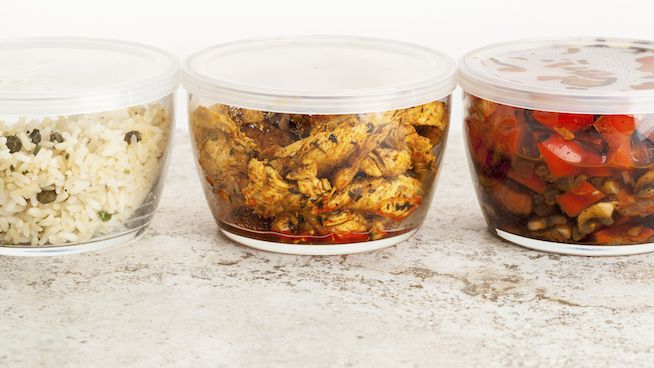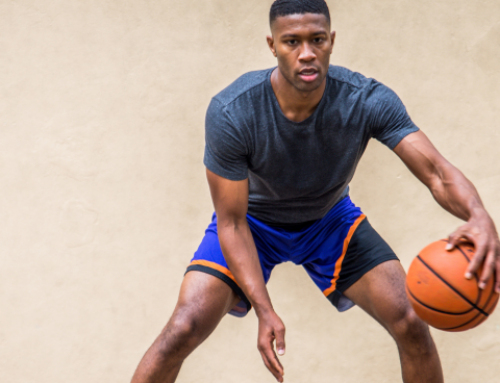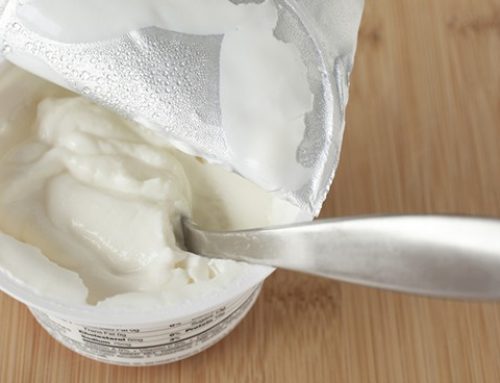Remember When Shaq Was Ripped and Super Athletic? Here’s How He Put on So Much Weight

When the Orlando Magic drafted Shaquille O’Neal with the first pick of the 1992 NBA Draft, he looked nothing like the massive, hulking bruiser he is today. The 7-foot-1 phenom out of LSU arrived in the NBA weighing less than 300 pounds–294 to be exact–and with so much real estate for that weight, he looked normal, even kinda skinny.
The Orlando Magic iteration of Shaq was a mutant gazelle, effortlessly galloping down the court like no person standing over seven feet tall ever should. While late in his career, teams had slow their offense in order to wait for Shaq to join them on the offensive end, Orlando’s players could barely keep up with him. He could dribble the ball up court, rise for absurd alley-oops and pull spin moves in the post as quick as the Tasmanian Devil.
But Shaq left Orlando for the Los Angeles Lakers in 1996, and his body began to change. It was slow at first, a gradual increase in the size of his shoulders and arms. But by the time the Lakers had won their first NBA championship with Shaq at the end of the 1999-2000 season, Shaq barely resembled the trim, supremely athletic center he was once. By 2002, he weighed 341 pounds. By the 2003-2004 NBA season, Shaq had expanded outward like a helium balloon, with his weight at one point reaching a whopping 370 pounds.
So what happened? How’d one of the greatest centers ever to play the game gain almost 100 pounds? There are a couple of reasons, and the first has everything to do with basketball.
In the off-season after his first championship, Shaq was tired of being pushed around in the post. Despite averaging 30 points per game during the postseason, Shaq felt he needed to add a significant amount of mass to his frame to prolong his superior play. From Fox Sports’ Charley Rosen:
It was after the Lakers’ first championship that Shaq made a decision that had immediate rewards but proved to be a long-range disaster. Feeling that massive centers like Arvydas Sabonis and Luc Longley were pushing him around in the low post, Shaq felt that he needed to be heavier. In his equation, mass equaled power equaled total domination. He therefore instructed his personal chef to overload his meals with meat and potatoes and the pounds quickly began to accumulate.
Thinking about it now, the idea that the almighty Shaq needed to change his physical appearance to contend with the likes of Luc Longley seems silly. It also had major consequences. Shaq remained dominant for the rest of his days in LA, tacking on two more championships before being traded to Miami in 2004 and adding another one in South Beach. But the extra poundage wreaked having on the appendages trying to hold Shaq’s body up, specifically his feet.
According to the LA Times, by 2002 Shaq was soaking his feet in a concoction of milk and ice after games to get rid of the burning sensation caused by capsaicin, a cream he rubbed on his feet each game to rid himself of the pain he’d started to experience on the court.
But banging bodies down low wasn’t the only reason for Shaq’s increase in size. His diet and training regimen, or lack thereof, also contributed to his shapeshifting. Though Shaq has made major changes to his diet after retirement, he’s upfront that his caloric intake during his playing days was less than ideal.
“When I was playing, I was a burger and bread eater, and you can’t really do that every day if you’re not getting exercise,” Shaq told Men’s Health in 2012.

O’Neal was also known for spending his summers anywhere but in the gym, then attempting to play himself back in shape during the season, a scenario that bothered both his teammates and coaches like Phil Jackson. In the recent ESPN documentary “This Magic Moment,” which recounted Shaq’s time with the Magic, the Big Aristotle said he enjoyed spending summers hanging out with his family and relaxing, rather than keeping himself in shape.
Shaq’s fluctuating weight was a major factor in his departure from the Lakers in 2004. Lakers owner Jerry Buss said later that he had no regrets about trading Shaq to Miami because of his significant weight gain.
“He’s 60 pounds lighter in Miami than he was in Los Angeles,” Buss told the LA Times in 2005. “And as you’ve probably gathered recently, he seems to be having some [health] problems. My reaction was, if he was not willing to get in shape, which he had five, eight years, some number of times to do, and we urged him. It seems that the motivation for him to lose weight was to trade him.”
Shaq remained dominant as a low-post behemoth for many years, but his excessive size caught up to him late in his career. When he was traded from the Heat to the Phoenix Suns during the 2007-2008 season, he was supposed to be the big man to take the Suns over the hump and vanquish the San Antonio Spurs, the Suns arch-nemesis. That never happened, as Shaq averaged just 12 points per game.
Beginning with the 2001-2002 season, Shaq played over 70 games in a season just twice, as foot injuries and other pains took their toll, partially because of his increased mass. Would Shaq have more than four rings if he’d kept himself on the lighter side? We’ll never know. His legacy can’t be questioned, but one can only wonder where he’d go down in the history books if he had kept himself under 300 pounds for his entire career.
RECOMMENDED FOR YOU
MOST POPULAR
Remember When Shaq Was Ripped and Super Athletic? Here’s How He Put on So Much Weight

When the Orlando Magic drafted Shaquille O’Neal with the first pick of the 1992 NBA Draft, he looked nothing like the massive, hulking bruiser he is today. The 7-foot-1 phenom out of LSU arrived in the NBA weighing less than 300 pounds–294 to be exact–and with so much real estate for that weight, he looked normal, even kinda skinny.
The Orlando Magic iteration of Shaq was a mutant gazelle, effortlessly galloping down the court like no person standing over seven feet tall ever should. While late in his career, teams had slow their offense in order to wait for Shaq to join them on the offensive end, Orlando’s players could barely keep up with him. He could dribble the ball up court, rise for absurd alley-oops and pull spin moves in the post as quick as the Tasmanian Devil.
But Shaq left Orlando for the Los Angeles Lakers in 1996, and his body began to change. It was slow at first, a gradual increase in the size of his shoulders and arms. But by the time the Lakers had won their first NBA championship with Shaq at the end of the 1999-2000 season, Shaq barely resembled the trim, supremely athletic center he was once. By 2002, he weighed 341 pounds. By the 2003-2004 NBA season, Shaq had expanded outward like a helium balloon, with his weight at one point reaching a whopping 370 pounds.
So what happened? How’d one of the greatest centers ever to play the game gain almost 100 pounds? There are a couple of reasons, and the first has everything to do with basketball.
In the off-season after his first championship, Shaq was tired of being pushed around in the post. Despite averaging 30 points per game during the postseason, Shaq felt he needed to add a significant amount of mass to his frame to prolong his superior play. From Fox Sports’ Charley Rosen:
It was after the Lakers’ first championship that Shaq made a decision that had immediate rewards but proved to be a long-range disaster. Feeling that massive centers like Arvydas Sabonis and Luc Longley were pushing him around in the low post, Shaq felt that he needed to be heavier. In his equation, mass equaled power equaled total domination. He therefore instructed his personal chef to overload his meals with meat and potatoes and the pounds quickly began to accumulate.
Thinking about it now, the idea that the almighty Shaq needed to change his physical appearance to contend with the likes of Luc Longley seems silly. It also had major consequences. Shaq remained dominant for the rest of his days in LA, tacking on two more championships before being traded to Miami in 2004 and adding another one in South Beach. But the extra poundage wreaked having on the appendages trying to hold Shaq’s body up, specifically his feet.
According to the LA Times, by 2002 Shaq was soaking his feet in a concoction of milk and ice after games to get rid of the burning sensation caused by capsaicin, a cream he rubbed on his feet each game to rid himself of the pain he’d started to experience on the court.
But banging bodies down low wasn’t the only reason for Shaq’s increase in size. His diet and training regimen, or lack thereof, also contributed to his shapeshifting. Though Shaq has made major changes to his diet after retirement, he’s upfront that his caloric intake during his playing days was less than ideal.
“When I was playing, I was a burger and bread eater, and you can’t really do that every day if you’re not getting exercise,” Shaq told Men’s Health in 2012.

O’Neal was also known for spending his summers anywhere but in the gym, then attempting to play himself back in shape during the season, a scenario that bothered both his teammates and coaches like Phil Jackson. In the recent ESPN documentary “This Magic Moment,” which recounted Shaq’s time with the Magic, the Big Aristotle said he enjoyed spending summers hanging out with his family and relaxing, rather than keeping himself in shape.
Shaq’s fluctuating weight was a major factor in his departure from the Lakers in 2004. Lakers owner Jerry Buss said later that he had no regrets about trading Shaq to Miami because of his significant weight gain.
“He’s 60 pounds lighter in Miami than he was in Los Angeles,” Buss told the LA Times in 2005. “And as you’ve probably gathered recently, he seems to be having some [health] problems. My reaction was, if he was not willing to get in shape, which he had five, eight years, some number of times to do, and we urged him. It seems that the motivation for him to lose weight was to trade him.”
Shaq remained dominant as a low-post behemoth for many years, but his excessive size caught up to him late in his career. When he was traded from the Heat to the Phoenix Suns during the 2007-2008 season, he was supposed to be the big man to take the Suns over the hump and vanquish the San Antonio Spurs, the Suns arch-nemesis. That never happened, as Shaq averaged just 12 points per game.
Beginning with the 2001-2002 season, Shaq played over 70 games in a season just twice, as foot injuries and other pains took their toll, partially because of his increased mass. Would Shaq have more than four rings if he’d kept himself on the lighter side? We’ll never know. His legacy can’t be questioned, but one can only wonder where he’d go down in the history books if he had kept himself under 300 pounds for his entire career.










